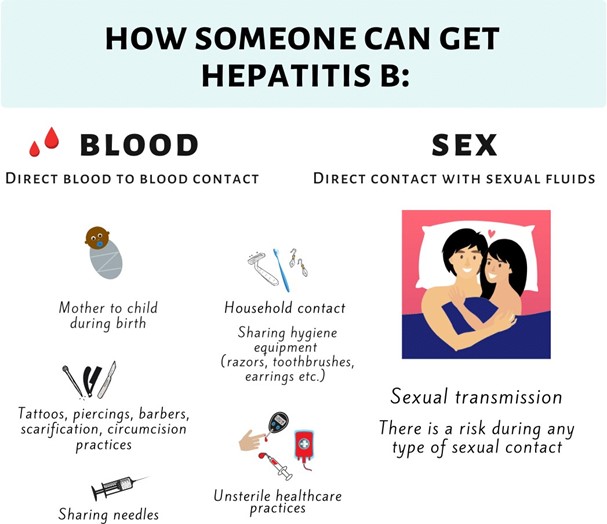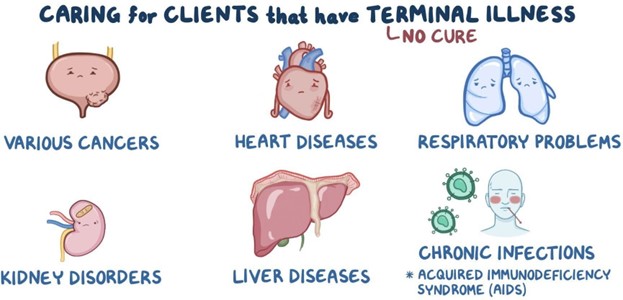A male client attends a community support program for mentally impaired and chemical-abusing clients. The client tells the practical nurse (PN) that his drugs of choice are cocaine and heroin. What is the greatest health risk for this client?
Diabetes.
Glaucoma.
Hypertension.
Hepatitis.
The Correct Answer is D
While the use of cocaine and heroin can pose various health risks, including cardiovascular complications, respiratory problems, and infectious diseases, Hepatitis is particularly associated with injection drug use, such as heroin. Hepatitis is an inflammation of the liver that can be caused by viral infections, including Hepatitis B and C. Sharing contaminated needles or other drug paraphernalia increases the risk of contracting Hepatitis. These viral infections can lead to chronic liver disease, liver cirrhosis, and even liver cancer if left untreated. Therefore, among the options provided, Hepatitis is the greatest health risk for this client due to the mode of drug administration and associated risks of viral transmission.
A, B, and C- It's important to note that while diabetes, glaucoma, and hypertension are all significant health conditions, they are not directly associated with the use of cocaine and heroin as drugs of choice. However, individuals who engage in substance abuse may still be at risk for developing or exacerbating other health conditions due to the overall impact on their physical and mental well-being.

Nursing Test Bank
Naxlex Comprehensive Predictor Exams
Related Questions
Correct Answer is C
Explanation
Choice A reason:
Requesting that the man get up and leave disregards the client's autonomy and right to privacy. It can be seen as intrusive and disrespectful, potentially causing embarrassment and distress to the client. In a long-term care facility, residents have the right to engage in consensual relationships. By asking the man to leave, the nurse would be infringing on the client's personal rights and freedoms. This action could also damage the trust and rapport between the nurse and the client, making future interactions more difficult.
Choice B reason:
Reporting the incident to the family breaches the client's confidentiality and privacy. The client has the right to engage in consensual relationships without family interference unless there are concerns about safety or capacity. Involving the family in such personal matters without the client's consent can lead to unnecessary conflict and distress. It is important for healthcare providers to respect the client's autonomy and confidentiality, ensuring that their personal choices are honored and protected.
Choice C reason:
Exiting the room and quietly closing the door respects the client's privacy and autonomy. It acknowledges their right to intimate relationships and maintains their dignity. This action demonstrates respect for the client's personal space and choices, fostering a supportive and respectful environment. By quietly exiting, the nurse avoids causing embarrassment or discomfort, allowing the client to maintain their dignity and privacy. This approach aligns with ethical principles in healthcare, emphasizing respect for the client's autonomy and personal rights.
Choice D reason:
Asking when the nurse should return interrupts the client's private moment. It can be handled more discreetly by returning later without disturbing them. This action, while less intrusive than asking the man to leave, still fails to fully respect the client's privacy. By asking when to return, the nurse is drawing attention to the situation, which can cause embarrassment and discomfort. A more respectful approach would be to quietly exit and return at a later time, ensuring that the client's privacy is maintained.
Correct Answer is A
Explanation
This is the information that the PN should collect during the admission assessment of a terminally ill client to an acute care facility. Health care proxy documentation is a legal document that appoints a person to make health care decisions for the client when they are unable to do so themselves. It is important to have this information in case the client's condition deteriorates and they need end-of-life care.

Whether you are a student looking to ace your exams or a practicing nurse seeking to enhance your expertise , our nursing education contents will empower you with the confidence and competence to make a difference in the lives of patients and become a respected leader in the healthcare field.
Visit Naxlex, invest in your future and unlock endless possibilities with our unparalleled nursing education contents today
Report Wrong Answer on the Current Question
Do you disagree with the answer? If yes, what is your expected answer? Explain.
Kindly be descriptive with the issue you are facing.
